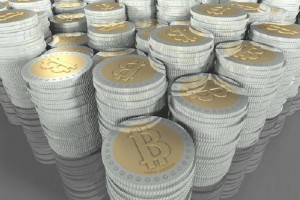Latest Posts
-
Finance 0
Weak Indices Feel The Pain
Heading into the July 4th holiday and indices experienced a mix of reactions. Large Caps came out relatively unscathed with only a minor reaction to last week’s selling. The S&P remains caught inside its tight trading range since the start of June. There is an On-Balance-Volume ‘buy’ trigger but other indicators like the MACD and ADX are bearish. Tech indices continue to feel the pain with the Nasdaq losing 0.5% on a bearish engulfing pattern. Bearish engulfing patterns typically mark reversals but in this case, points to continued selling pressure in what yet could turn into a new downward channel. The Nasdaq 100 experi...On July 4, 2017 / By Kurt Osterberg -
Finance 0
Tesla Model 3 Ramp May Go Faster Than Expected, But That’s Not What Matters Most
Tesla (TSLA) CEO Elon Musk tweeted new details about the Model 3 ramp, including that they’re planning to roll the first one off the production line on Friday. However, some are suggesting that by Musk’s numbers, it looks like he deftly cut production guidance for this year again—without saying he was cutting his outlook. Others are pointing out that a faster-than-expected Model 3 ramp matters little if Tesla can’t turn a profit on the car and produce it without major technical problems caused by the lack of a prototype. But if the company turns the Model 3 into a successful, profitable car without any serious problems, the bears wo...On July 4, 2017 / By Kurt Osterberg -
Finance 0
Are These Big Bank Bigwigs Guilty Of Fraud? You Decide
In 2008, the biggest banks in the Western world were being bailed out by their governments. Barclays, however, raised billions of dollars on its own to fortify its balance sheet and sidestep the inconvenience of having its executives’ compensation and bankers’ bonus pools subject to regulatory dictates. Now it turns out that not everything was what it seemed. Barclays Plc. (NYSE:BCS), the holding company that controls Barclays Bank Plc. (NYSE:BCS-PD), and four former top Barclays executives have been charged with fraud relating to how they raised the money that saved the bank and their paychecks from government oversight. Whether they w...On July 4, 2017 / By Kurt Osterberg -
Finance 0
Property Bubbles On Bloomberg
The chart shows real house prices in US vs Canada from the period 1975-2016. Taking a long time period is always good practice, as is inflation adjusting price series such as these. The one caution I would remark on is setting your base period (i.e. where you rebase the indexes), as it can sometimes mislead. But there is clearly something going on here, and Canadian house prices have moved materially higher than that of the United States. Carlson notes in the article that it looks like a bubble – and a much bigger bubble than that which the US went through, and while the bursting of a bubble can be hard to predict Canadians sh...On July 4, 2017 / By Kurt Osterberg -
Finance 0
July 2017 Economic Forecast: Stronger Fundamentals
Econintersect’s Economic Index continues to forecast strengthening economic fundamentals – with the index showing normal growth for the third month in a row. Six-month employment growth forecast indicates modest improvement in the rate of growth. Analyst Summary of this Economic Forecast This month the internals of our index continue to be aligned in positive territory – all with positive contributions to Main Street. What I am saying is the fundamentals are strengthening but the noticeable effects will be slight. Retail sales including autos are very soft. The consumer appears not to want to carry additional debt – ...On July 4, 2017 / By Kurt Osterberg -
Finance 0
The Fallacy Of Analogs
One of the key tenets of technical analysis is that we can use previous patterns to forecast what might happen in the future. It is not the same easy modeling of fractals (please tell me you get the sarcasm). We cannot build the big picture from a lot of little pictures as we can with snowflakes, coast lines and galaxies. And if you think that patterns are self fulfilling prophesies, please stop reading now and navigate to Ihaveaclosedmind.com. Patterns do not predict the future. They give us a better probability of a future outcome because people act in similar ways when faced with similar situations. You get to define what is similar. Note ...On July 4, 2017 / By Kurt Osterberg -
Finance 0
What Happened While US Was Celebrating Independence
US markets were closed on July 4. Asian and European equities moved lower as did most bond yields. The MSCI Asia Pacific Index fell a third of one percent. It was the third consecutive losing session and five in the past six. European markets were mostly lower, and the Dow Jones Stoxx 600 fell 0.3%, after rising 1% on Monday. It too has fallen in five of the past six sessions. The German 10-year Bund yields remain near the 50 bp ceiling that has capped yields in late January, mid-March, and mid-May. Above there, and yields can rise to 65-70 bp. A year ago (July 6), the yield bottomed a little beyond minus 20 bp.The 10-year Japanese gover...On July 4, 2017 / By Kurt Osterberg -
Finance 0
Check Out The 4th Of July Fireworks For This Fashionable Stock
We hope this post finds our Canadian and American readers enjoying their Independence Day weekend. It’s important to step back and remember the freedoms we often take for granted. Not everyone is so fortunate. May we always cherish the sacrifices made (and be willing to do the same) to ensure a free society. Because of the holiday, this update will be as brief as possible. We’ve found a fashionable stock on the verge of a firework-like breakout: VFCorp (ticker: VFC). Let’s get down to business. For many years, VFCorp (the parent company of Lee, The North Face, Jansport, Vans, you get the point) was a leader of markets. More specifical...On July 4, 2017 / By Kurt Osterberg -
Finance 0
China PMI Surges: ETFs In Focus
China’s manufacturing activity grew faster than expected in June 2017. According to China’s National Bureau of Statistics (NBS), the manufacturing Purchasing Managers Index (PMI) increased to 51.7 in June compared with 51.2 in May and above market estimates of 51, per a Reuters poll. Moreover, China’s services PMI increased to 54.9 in June compared with 54.5 in May. Improvement in both these measures is indicative of resilience in the economy and the momentum provides some respite considering the looming debt problem faced by the country. Investors should note that PMI readings higher than 50 indicate expansion while below 50 indicate ...On July 4, 2017 / By Kurt Osterberg -
Finance 0
E Do Not Hire Central Bankers To Forecast Inflation
A consensus is building that the major central banks are about to embark on monetary tightening. The era of low interest rates maybe over. All central banks have a primary mandate to set policy so that inflation is stable at a 2% annual rate. Anything below that rate means that the economy is underperforming and policy should be relatively loose to promote growth; anything above 2% can be interpreted that the economy is running “too hot” and needs to be reigned by means of a more restrictive monetary policy. So, everything rests on how good are the central bankers as forecasting inflation. Let’s look at the record. Ted Carmichael examin...On July 4, 2017 / By Kurt Osterberg
Top Posts
-
 The Importance for Individuals to Use Sustainable Chemicals
The Importance for Individuals to Use Sustainable Chemicals
-
 Small Businesses: Finding the Right Candidate for the Job
Small Businesses: Finding the Right Candidate for the Job
-
 How to Write the Perfect Thank You Letter After Your Job Interview
How to Write the Perfect Thank You Letter After Your Job Interview
-
 3 Best Large-Cap Blend Mutual Funds For Enticing Returns
3 Best Large-Cap Blend Mutual Funds For Enticing Returns
-
 China suspected in massive breach of federal personnel data
China suspected in massive breach of federal personnel data














